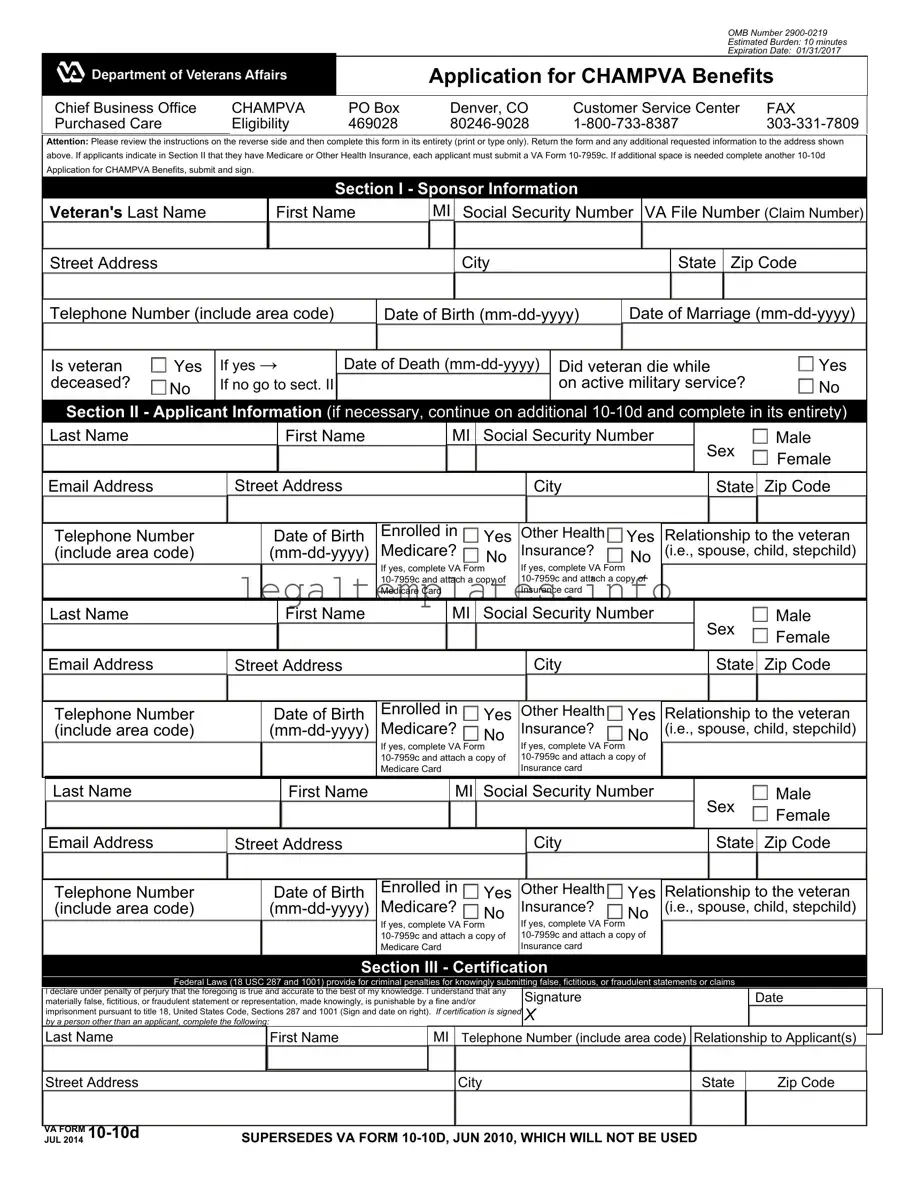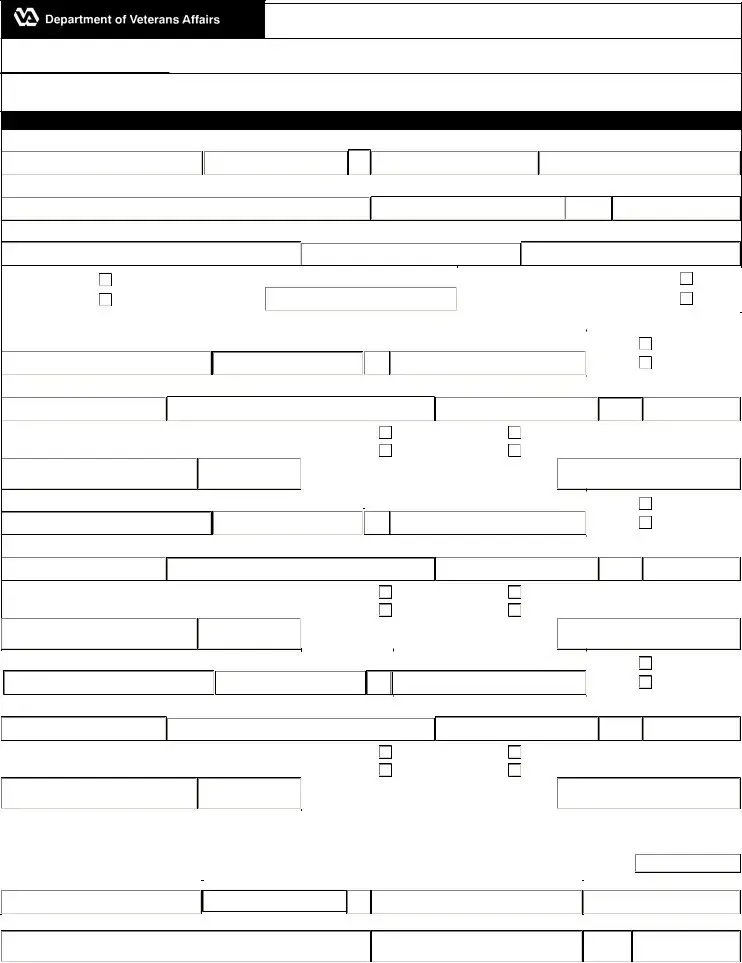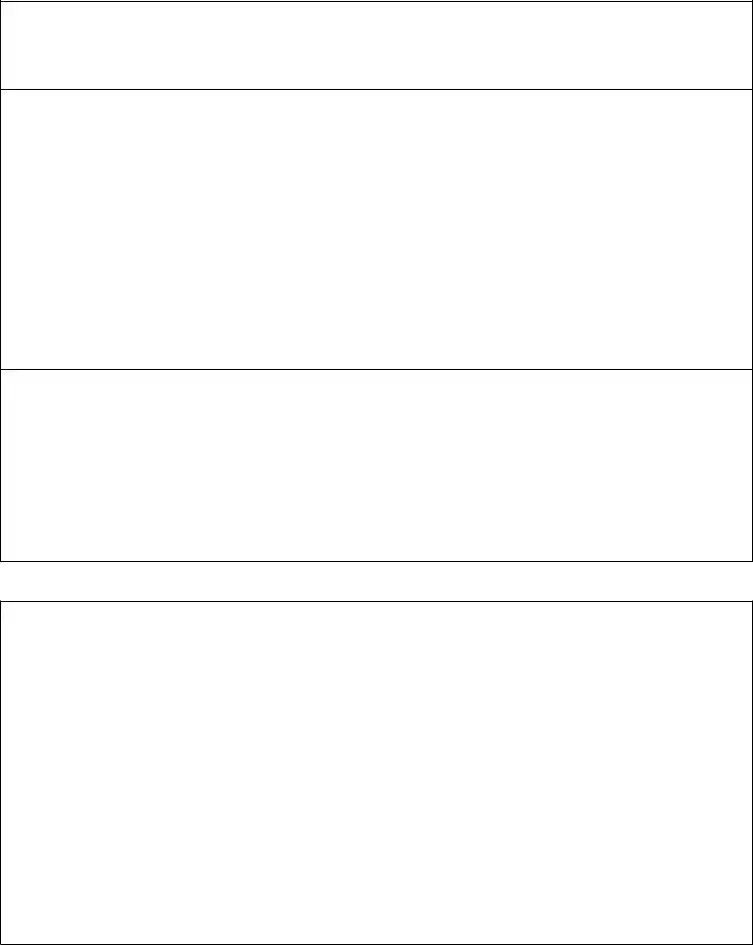The VA Form 10-10EZ, Application for Health Benefits, shares similarities with the VA 10-10D form as both are used by veterans and their family members to apply for health care benefits. The 10-10EZ is specifically for veterans seeking to enroll in the VA health care system, capturing information about military service, health insurance, and financial status to establish eligibility and priority for benefits.
VA Form 21-526EZ, Application for Disability Compensation and Related Compensation Benefits, is akin to the 10-10D form in that it is also used by veterans and their families. However, the focus here is on applying for disability benefits due to service-connected injuries or diseases. Like the 10-10D, it requires detailed personal and service-related information to process the claim.
The Application for Dependency and Indemnity Compensation (DIC), Death Pension, and/or Accrued Benefits (VA Form 21-534EZ) is utilized by surviving spouses and children of deceased veterans. This form is comparable to the 10-10D as it involves applying for benefits due to the veteran’s death. It necessitates comprehensive details about the veteran’s service, cause of death, and the applicant's relationship to the veteran.
VA Form 22-1990, Application for Education Benefits, is used by veterans and their dependents to apply for educational benefits under the various GI Bill programs. Similar to the 10-10D, it is intended for beneficiaries of a veteran, but in this case, focuses on financial assistance for education rather than medical benefits.
VA Form 10-10CG, Application for the Program of Comprehensive Assistance for Family Caregivers, parallels the 10-10D form as it is designed for veterans’ family members. This application is for caregivers of veterans to receive support and benefits, demonstrating the VA’s multifaceted approach to veterans’ health and well-being, encompassing not just the veterans but those who care for them.
The Health Benefits Renewal (VA Form 10-10EZR) is a form used by veterans enrolled in the VA health care system to update their personal, insurance, or financial information. Like the 10-10D, it ensures that beneficiaries' details are current, but it is specifically for those already receiving health benefits, allowing for the continuation of care.
VA Form 21-686c, Declaration of Status of Dependents, is used by veterans to add dependents to their benefit claims, potentially increasing their compensation. Similar to the 10-10D's function of establishing eligibility for dependent benefits, this form ensures veterans receive accurate compensation based on their family size.
The Application for Furnishing Nursing Home Care to Beneficiaries of VA- VA Form 10-1170, is for veterans seeking long-term nursing home care through VA facilities or private care paid for by the VA. While focused on a specific type of care, it shares the goal of the 10-10D of providing health-related benefits to veterans and their eligible family members.
Individual Unemployability (IU) application, through VA Form 21-8940, Veteran’s Application for Increased Compensation Based on Unemployability, is designed for veterans unable to maintain employment due to service-connected conditions. This form, while specifically for compensation adjustments, shares the goal with the 10-10D of supporting veterans and their families based on changes in their health status.
Finally, VA Form 28-1900, Disabled Veterans Application for Vocational Rehabilitation, is for service-disabled veterans seeking employment and independent living support. Though its focus is more on career assistance than direct health benefits, like the 10-10D, it reflects the VA's comprehensive approach to veteran welfare, emphasizing support beyond just medical care.



